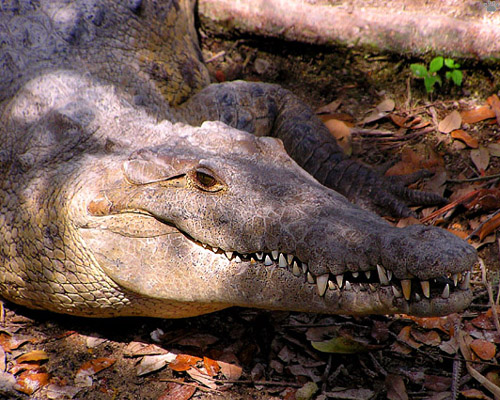
American crocodile (Crocodylus acutus), Everglades National Park, Florida.
Crocodiles part 13: American Crocodile
In addition to alligators and caimans, the New World has 3-4 species of crocodiles. The only common and widespread of them is the American crocodile.
 |
 |
| American crocodile, Lago Enriquillo, Dominican Republic. |
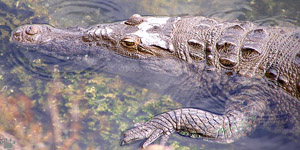
American crocodile, Lake Osceola on University of Miami campus,
Coral Gables, Florida. |
This is a large species, reaching over 5 m (17') in length (up to 8 m according to some sources). |
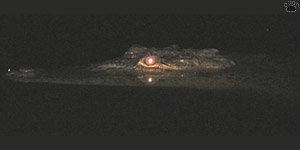
American crocodile at night, Crocodile National Wildlife Refuge,
Florida. |
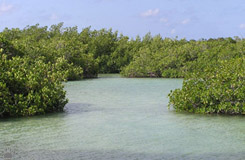
American crocodile habitat in mangrove islands,
ENP, Florida. |
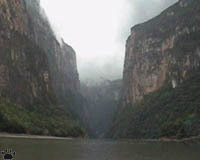
American crocodile habitat,
Semindero Canyon, Mexico. |
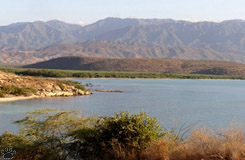
American crocodile habitat, Lago Enriquillo,
Dominican Republic. |
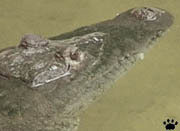
American crocodile, Montes Azules, Mexico. |
It occurs from both coasts of Central Mexico to extreme north Peru and Brazil, as well as on many islands in the West Indies, and at the southern tip of Florida. This crocodile prefers brackish water, but many populations exist in freshwater, saltwater, and even in high-salinity lakes. It is most common in estuaries, mangrove swamps and coastal lagoons. |
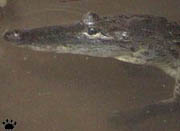
American crocodile, Montes Azules, Mexico. |
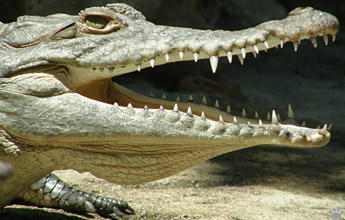 |
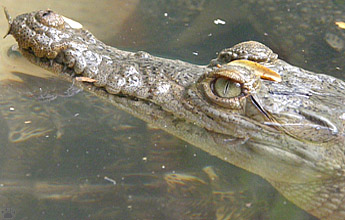 |
| American crocodiles in Chiapas, Mexico: left - Rio Chajul, right - ZOOMAT. |
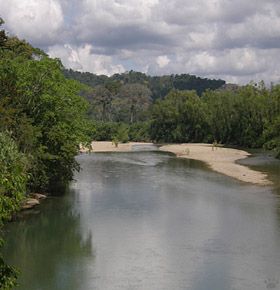
Habitat of American crocodile, Rio Chajul, Mexico. |
In parts of Mexico and Guatemala where this species is sympatric with Morelet's crocodile (see following pages), it inhabits rivers and big lakes, while Morelet's lives in small forest lakes and swamps. Some American crocodiles in Chiapas show clear signs of hybridization (right). |
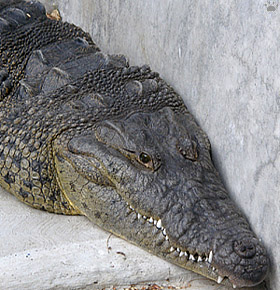
Morelet's-like American croc from Semindero Canyon, ZOOMAT. |

Teeth of American crocodile, ENP, Florida. |

American crocodile,
Semindero Canyon, Mexico. |
American crocodile is still common in many locations, but some populations are extinct (for example, in the Bahamas) or endangered (in Peru, Ecuador, and many islands). Thanks to conservation efforts, the small Florida population is now recovering. |

American crocodile,
Semindero Canyon, Mexico. |
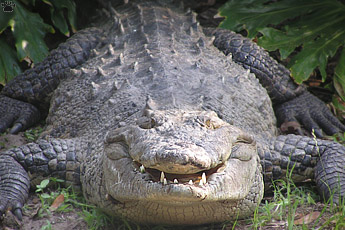 |
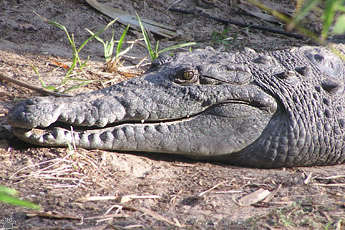 |
| American crocodiles, St. Augustine Alligator Farm Zoological Park, Florida. |
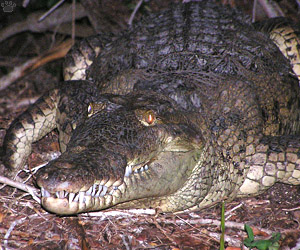
American crocodile in an apparent trailside ambush, ENP, Florida. |
As evidenced by relatively narrow snout, this species is mostly a fish-eater. But it would hunt anything that moves, and does engage in nocturnal "trailside ambushes". |

American crocodile in an apparent trailside ambush, ENP, Florida. |
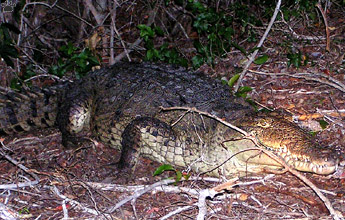 |
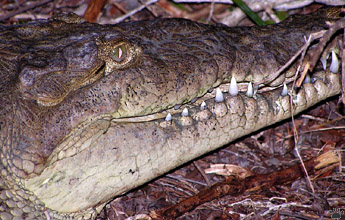 |
| American crocodile in an apparent trailside ambush, ENP, Florida. |
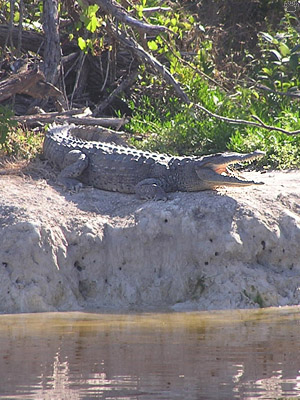
Basking adult female, ENP, Florida. |
American crocodile has been known to attack domestic animals and people, but it is far less dangerous than some other large crocodiles. |
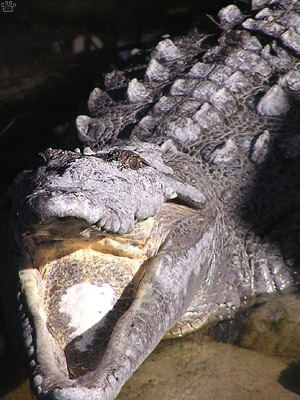
This old crocodile has lost all its teeth. ENP, Florida. |
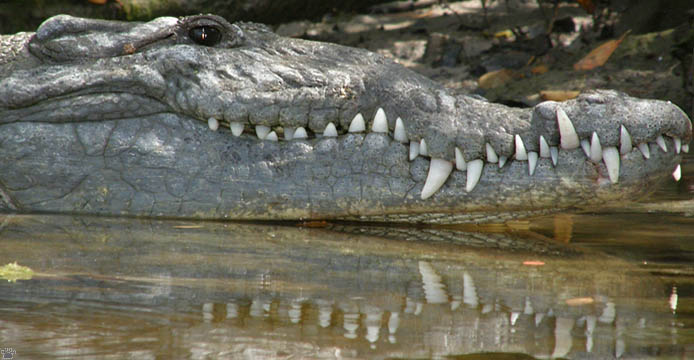
American crocodile, ENP, Florida. |
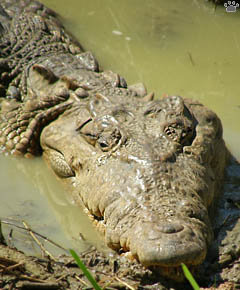
American crocodile, RPR, Jamaica. |
No attack on humans has ever been reported in the US, where more than a thousand American crocodiles now lives. The only fatal cases I've ever heard of were in Central America. But now the US population is rapidly growing, and, although seeing crocodiles in the wild is still difficult (except in just one location - Flamingo boat harbor in the Everglades), it is only a matter of time. |
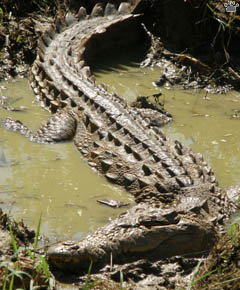
American crocodile, RPR, Jamaica. |
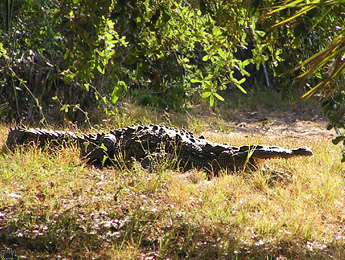 |
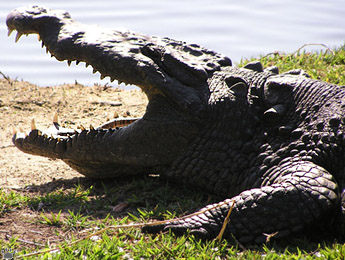 |
| Basking territorial males, ENP, Florida. |

Partially toothless crocodile, ENP, Florida. |
Probably because Florida population has recently passed through a bottleneck (a period of very low numbers), many animals here seem to have genetic anomalies: they are missing most teeth, or are partial albinos (leucistics). |
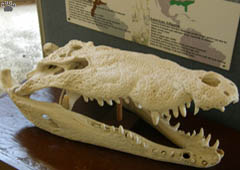
Normal American crocodile skull, Gatorland, Florida. |
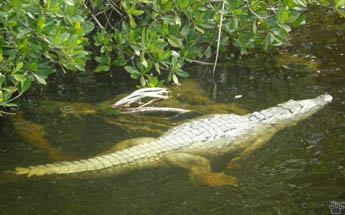 |
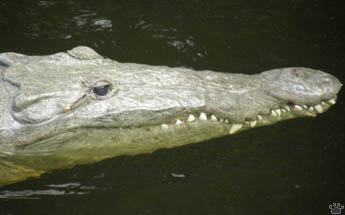 |
| Leucistic American crocodile, ENP, Florida. |
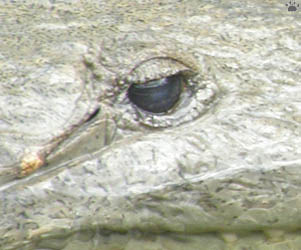
Eye of a leucistic crocodile, ENP, Florida. |
Just like leucistic alligators (see previous pages) and some albino birds, leucistic crocodiles usually have blue eyes. |
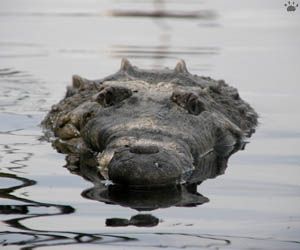
Normal coloration of an American crocodile, ENP, Florida. |
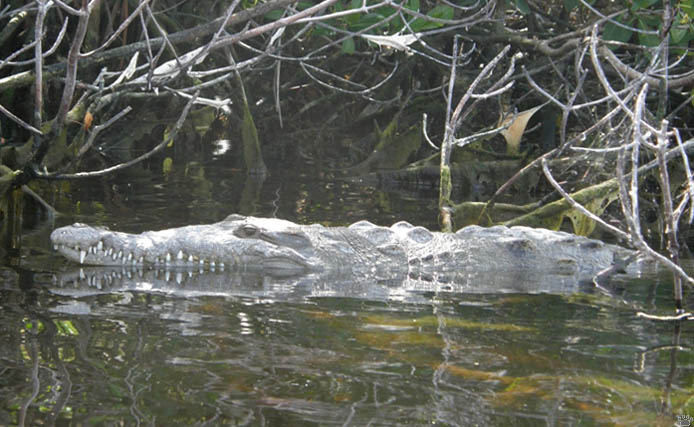
Leucistic American crocodile in the mangroves, ENP, Florida. |
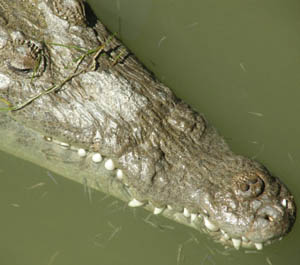
Small fish cleaning crocodile teeth, ENP, Florida. |
Tales of small birds cleaning crocodiles' teeth have never been confirmed, but small fish do it very often. |

Small fish cleaning crocodile teeth, ENP, Florida. |
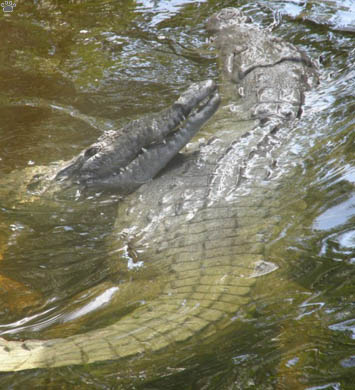 |
 |
| American crocodiles during foreplay, ENP, Florida. |

Male singing to a female, ENP, Florida. |
Courtship involves swimming in pairs and a lot of touching. |

Male in inflated posture, ENP, Florida. |
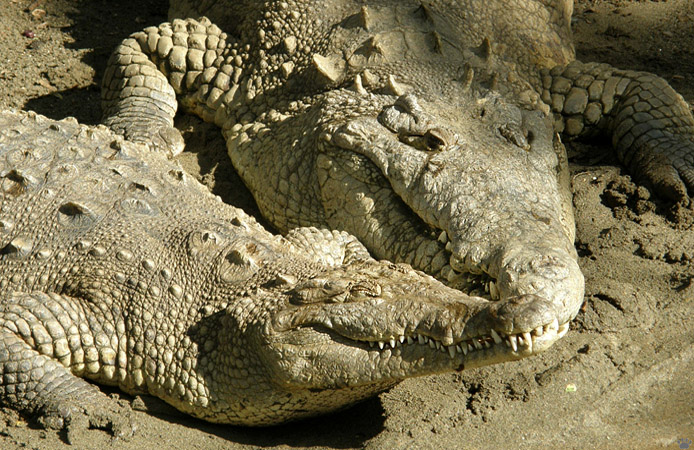 |
| American crocodiles in love, Salamanca National Park, Colombia. |

Female bellow-growls while caressed by male, ENP, Florida. |
Mating-season displays of this species often do not include any roaring - just a loud head-slap and an infrasound pulse. Usually males display with their head onshore and their body underwater. |
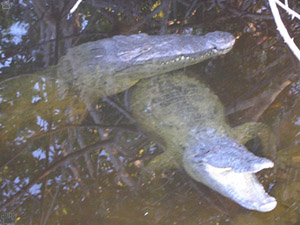
Female bellow-growls while caressed by male, ENP, Florida. |
 |
| Roaring male American crocodile, ENP, Florida. |
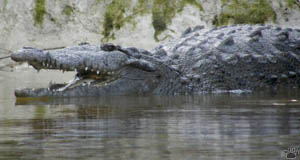
Female guarding her nest, ENP, Florida. |
Females usually build hole nests, but in Florida they can also build mound nests. |
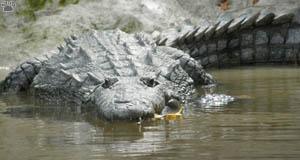
Female guarding her nest, ENP, Florida. |
 |
| Female guarding her nest, ENP, Florida. |
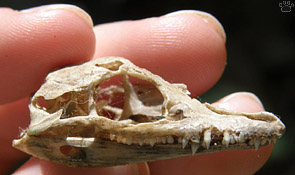
Skull of baby American crocodile, ZOOMAT. |
Juveniles are relatively silent, and disperse within a few days of hatching. They reach sexual maturity at ~2.5 m (8') length. |
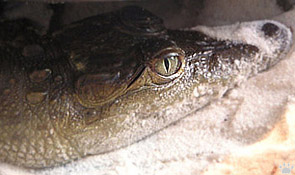
Baby American crocodile, ENP, Florida. |
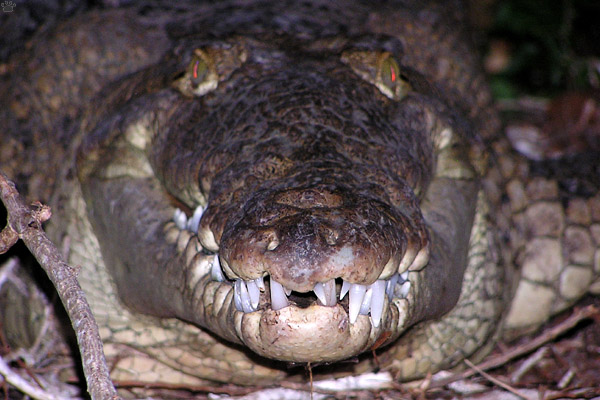
American crocodile in an apparent trailside ambush, ENP, Florida. |
Part 14: Orinoco Crocodile
Back to Part 12
Home
|